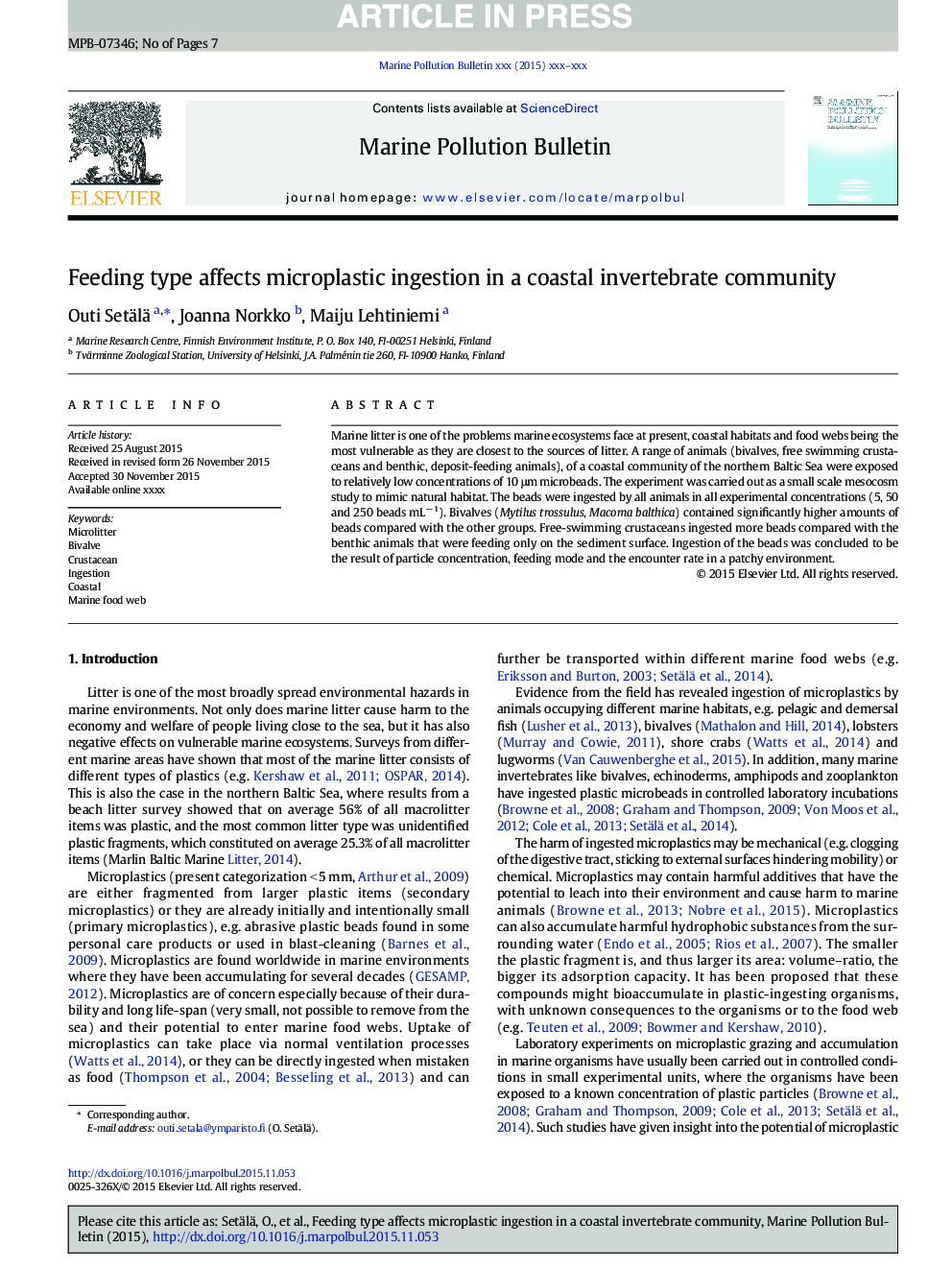| Article ID | Journal | Published Year | Pages | File Type |
|---|---|---|---|---|
| 6356306 | Marine Pollution Bulletin | 2016 | 7 Pages |
Abstract
Marine litter is one of the problems marine ecosystems face at present, coastal habitats and food webs being the most vulnerable as they are closest to the sources of litter. A range of animals (bivalves, free swimming crustaceans and benthic, deposit-feeding animals), of a coastal community of the northern Baltic Sea were exposed to relatively low concentrations of 10 μm microbeads. The experiment was carried out as a small scale mesocosm study to mimic natural habitat. The beads were ingested by all animals in all experimental concentrations (5, 50 and 250 beads mLâ 1). Bivalves (Mytilus trossulus, Macoma balthica) contained significantly higher amounts of beads compared with the other groups. Free-swimming crustaceans ingested more beads compared with the benthic animals that were feeding only on the sediment surface. Ingestion of the beads was concluded to be the result of particle concentration, feeding mode and the encounter rate in a patchy environment.
Related Topics
Physical Sciences and Engineering
Earth and Planetary Sciences
Oceanography
Authors
Outi Setälä, Joanna Norkko, Maiju Lehtiniemi,
